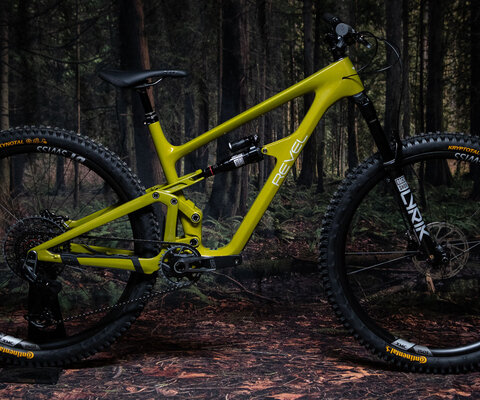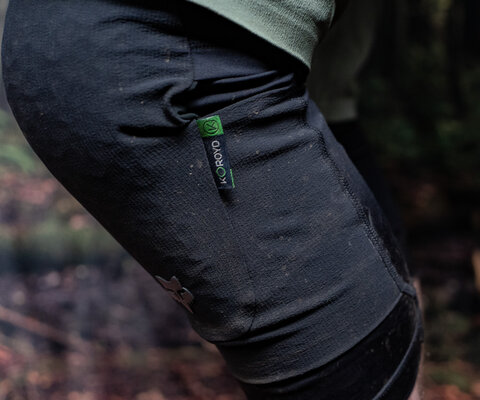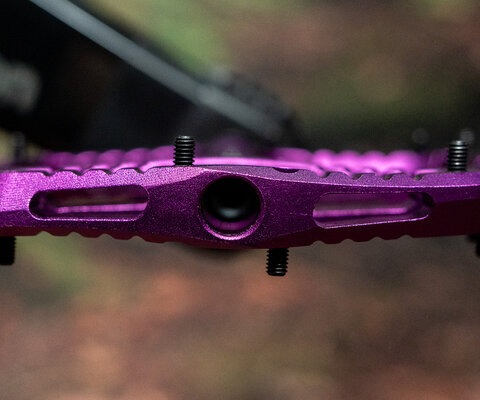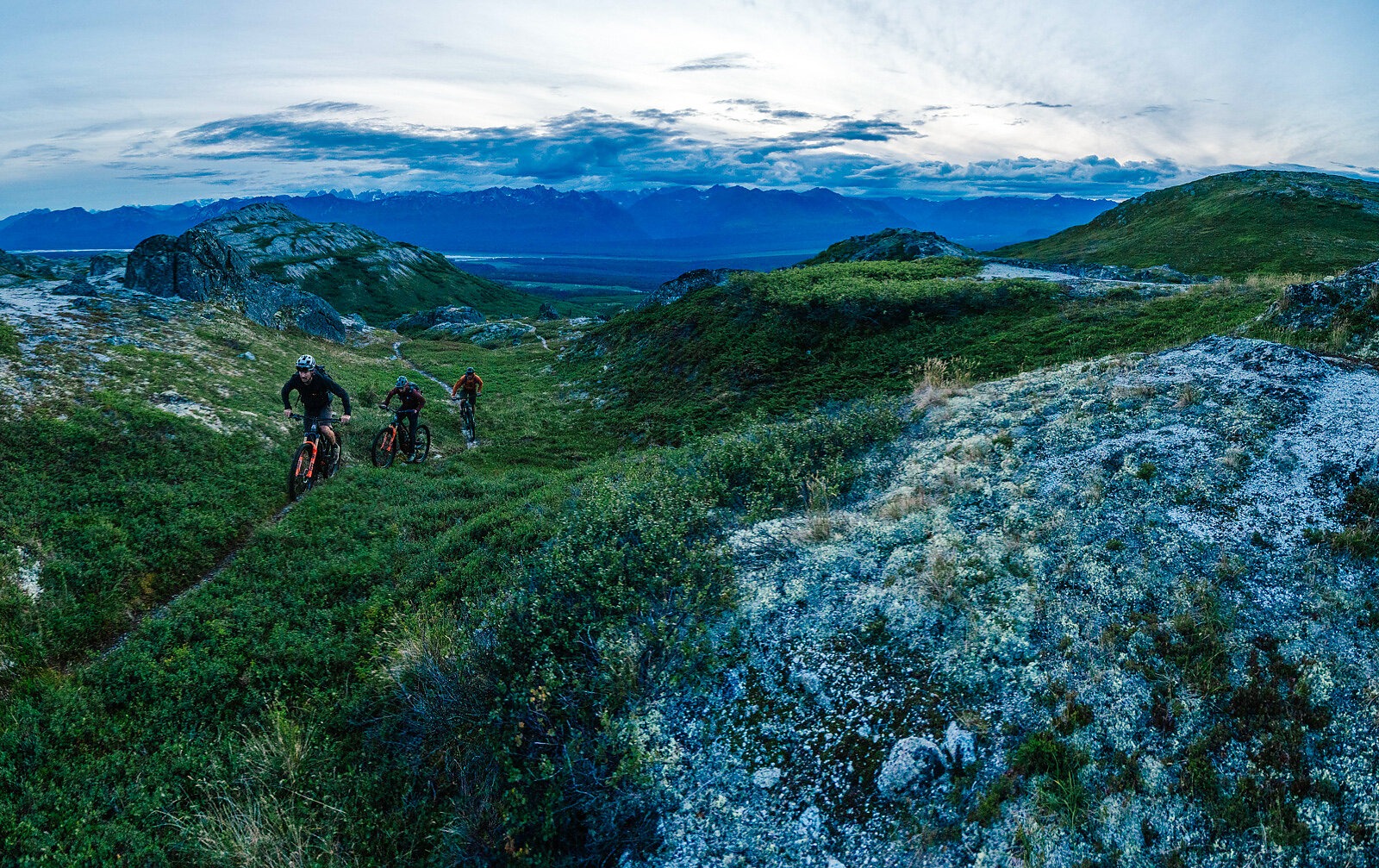
Search for Nothing Exploring Alaska's Wide-Open Riding Scene
Words and Photos by Felix Burke
Mountain peaks beckoned from below as I looked out the window of the plane. The thickening snow on the scaly heights of Northern British Columbia peaks eventually led to Alaska’s Inside Passage, which revealed itself through a tapestry of blue, gold, and green shimmers as the sun reflected off the water between the islands of the Alexander Archipelago.
I was meeting my ragtag friends Sam Schultz, Matt Monod, and Peter Ostroski in Anchorage. The latter, a transplant from the Northeast, now lives in Alaska. He would be our guide. We would also link up with some new friends, Tony Naciuk and Rebecca Fiegl, both Anchorage locals.
Shortly after picking us up from the airport, Tony pulled up to a red light, looked both ways down a traffic-less boulevard and proceeded to run the red light.
“It’s a non-surveillance state,” he said. “There are no red-light cameras here.”
I liked the place already.
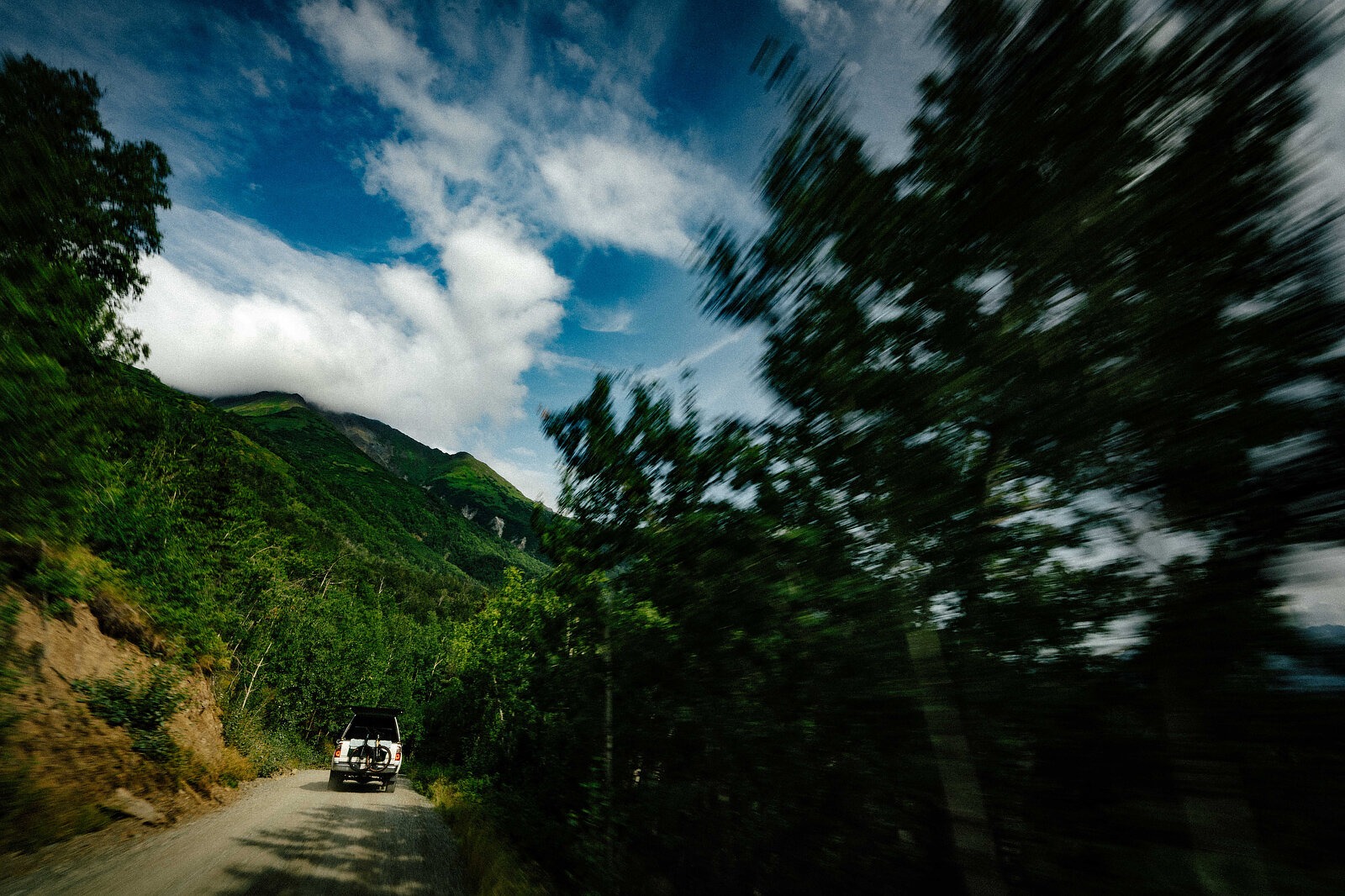

Rolling up to Tony’s home, we found the garage door open, his roommates Carly and Isaac sorting through sizable pieces of salmon filets on the floor, all recently vacuum sealed and ready for storage. The Alaska Department of Fish and Game grants state residents the right to use dip nets to fish up to 25 salmon a year as a means of subsistence. This allowance means many locals have stocked freezers full of salmon by summer’s end. It’s a testament to the proximity Alaskans share with the land they inhabit.
It was late in the day at this point, but the sun was still high in the sky and our circadian rhythms hadn’t hit us with any signals to slow down yet. Soon, Tony was slipping on his kneepads: “You guys want to hit Hilltop?”
Opened in August 2021, Hilltop Bike Park claims to have the “most progressive trails and features in Alaska” and is the northern-most bike park in America. At 294 feet high, it might not offer the most impressive vertical drop, but the grassroots feel and the well-built trails make it an incredibly fun place to ride. We saw kids ripping the pumptrack by the parking lot, a slick jump line running below the lift and perfectly tacky dirt, making it obvious why it has become a hub for Anchorage’s riding community.
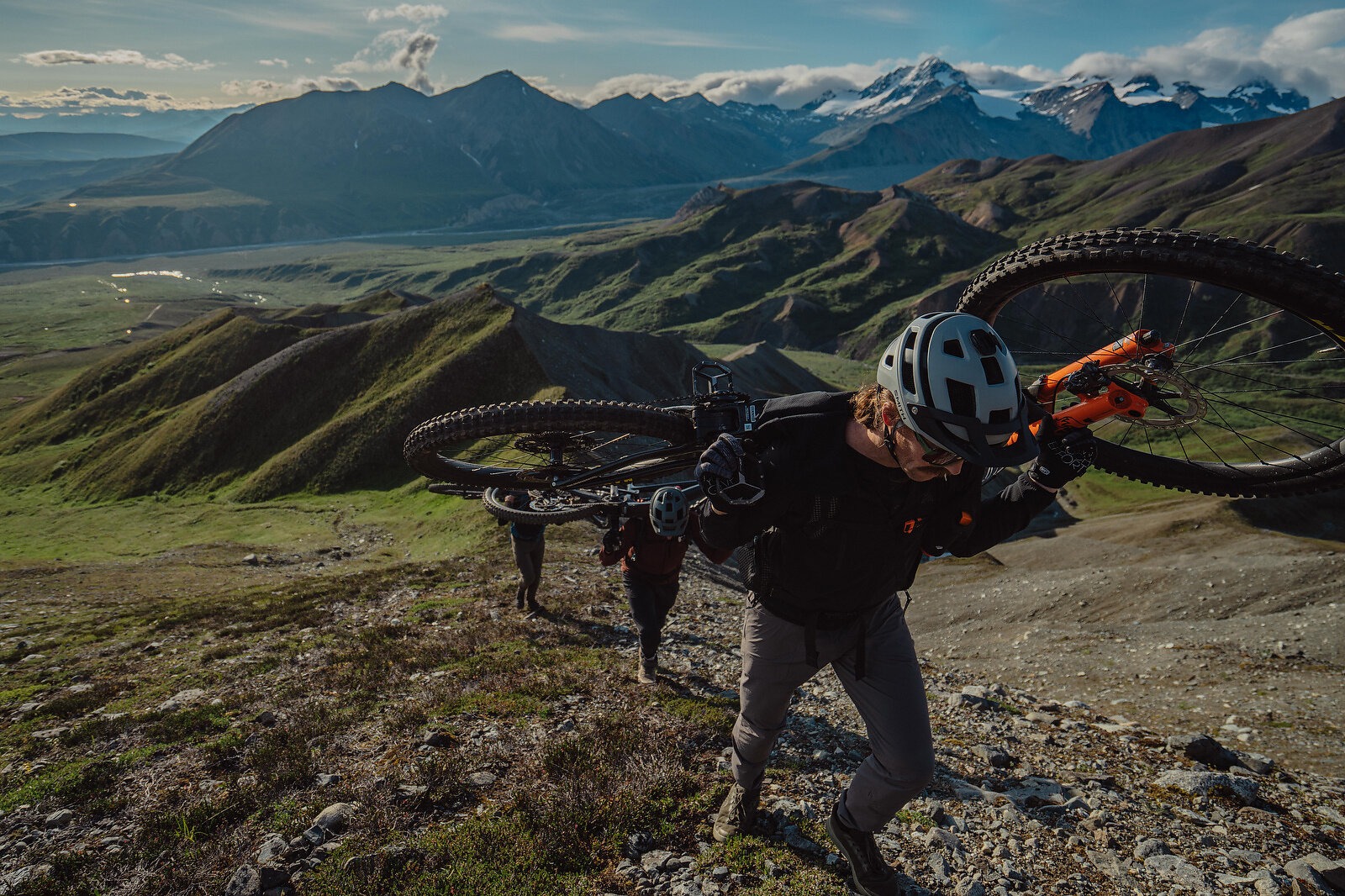
“Hilltop has been working hard on building more trails that offer a healthy progression curve as well as programs like youth camps and a race series,” said Robert DeBerry, the marketing and communications manager at Hilltop, which operates as a nonprofit. “We’re all about the youth and building community. We had a six-year-old kid, Ronin, ride 511 laps of the bike park this year—that’s a lot for a short Alaskan summer! That really gets us stoked.”
The day after riding Hilltop, we headed south to meet with Peter and his friend, Dan Starr, in Girdwood. Alaskan’s tend to have an acute knowledge of their home region, but working for Chugach Powder Guides in the winter and riding their bikes as much as possible through the short Alaskan summers have given Peter and Dan a particularly deep knowledge of south-central Alaska.
Our ride began by shouldering our bikes and setting off on foot. Matt and I, unfledged Alaskan riders, were getting our first taste of the signature local flavor—grueling hike-a-bikes. Putting step after step into thick loam as we gained altitude, we periodically look at each other, both smiling through gritted teeth and salivating over the descent to come. The trail rapidly climbed its way out of the trees and benchcuts across an alpine meadow before eventually leading to a ridge, where we stopped just short of the shaly slopes guarding a towering peak. It was 9 p.m. and the sun looked as though it was setting, but given the nearly horizontal trajectory the sun holds during the summer months at this latitude, it would stay up for the next two-and-a-half hours with darkness only coming well past midnight. Golden hour became a golden age of lapping immaculate alpine singletrack, with each descent increasing in speed as we found new natural gaps and transitions to jump.
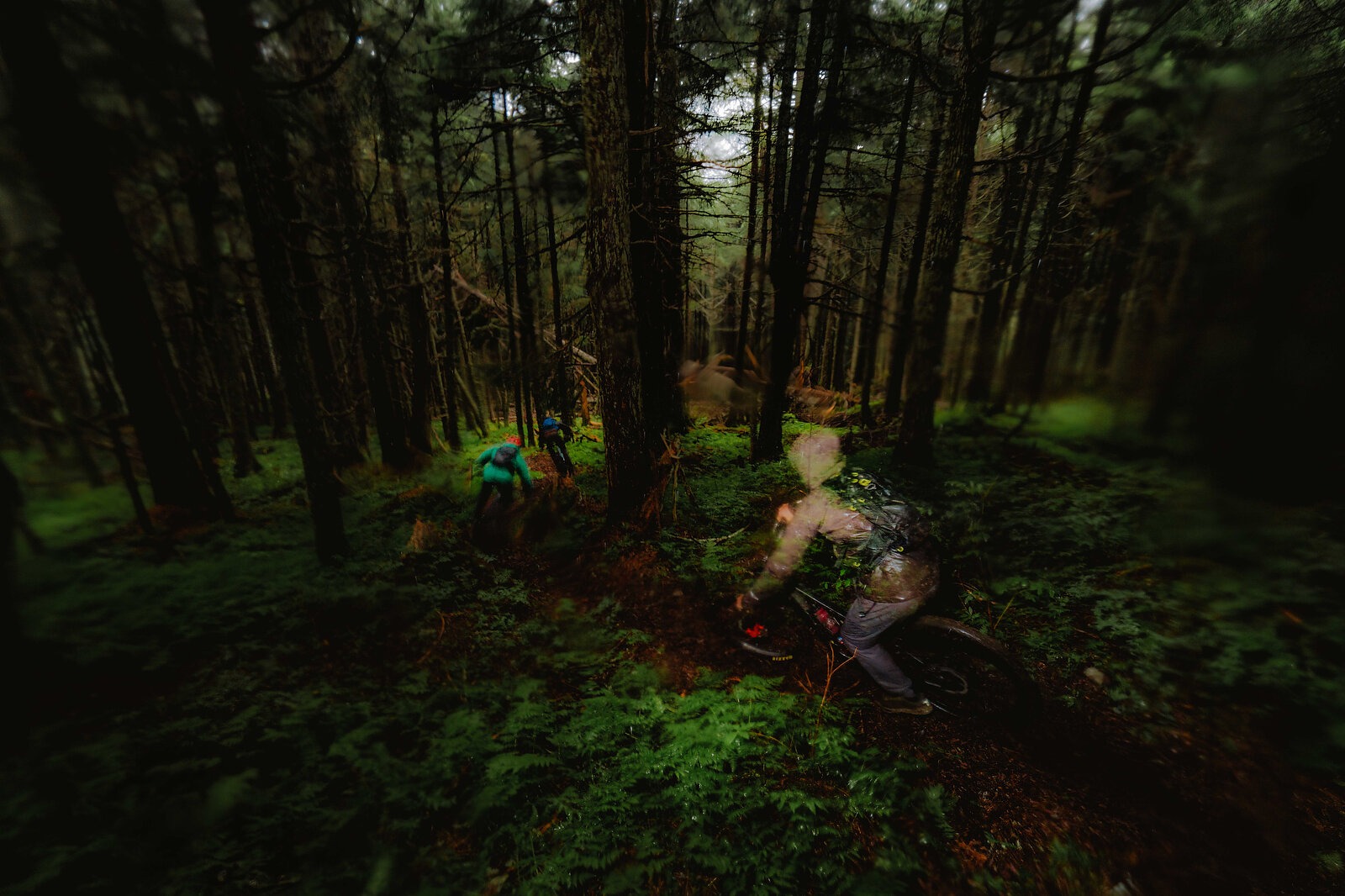
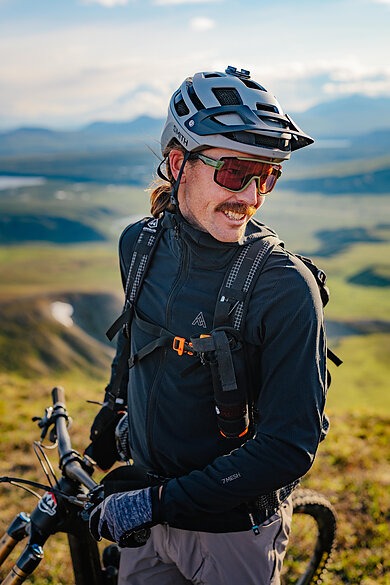
It was nearly midnight by the time we bombed down a final wooded section of trail. Spirits were high and the trail reflected our energy right back, offering pumpy straightaways and long-radius corners that held speed perfectly. By the time we rolled back to the trucks, we all carried looks of disbelief on our faces. Was that real? Did that really just happen?
Still on a high from the previous evening’s ride, we were eager to check out a trail built by local go-getter Nate Banish. His trail, “Indecent Exposure,” wears its name well—its main challenge being a steep rocky cliff that requires carefully controlling speed to avoid tumbling hundreds of feet down a rugged slab. Nate’s trail overlooks the Knik Glacier and offers incredible vistas. Although the views are enjoyed mostly on the way up given how focused one must be when descending, having an expansive glacial valley in your periphery made the riding experience that much more memorable. In addition to this iconic trail, we rode the rest of the Knik River Public Use Area, made up of thin ribbons of scratched-in singletrack that weaves between beautiful balsam poplar trees in a way that reminded me of tight, techy riding on the East Coast.
After a few days of riding we had covered a lot of what was on offer in south-central Alaska, which contains the vast majority of purpose-built mountain bike trails in the state. We still hadn’t hit the trails of Wasilla and Seward—both appearing to have a selection of incredible trails—but we had sampled Hilltop, Alyeska, Girdwood, and Knik River, covering a substantial fraction of the total official trails given the short time since we had arrived.
What drew us to the 49th State in the first place was its relative obscurity and the allure that something may be there for us to uncover. By reporting back, I was worried about handing the next bike fiend a shiny silver platter with a heap of untold Alaskan loam and essentially saying “serve yourself.” But after a few days of riding, my concerns regarding publicly revealing a secret gold mine and contributing to a form of mountain bike gold fever that could see the place overrun and ruined, had subsided.
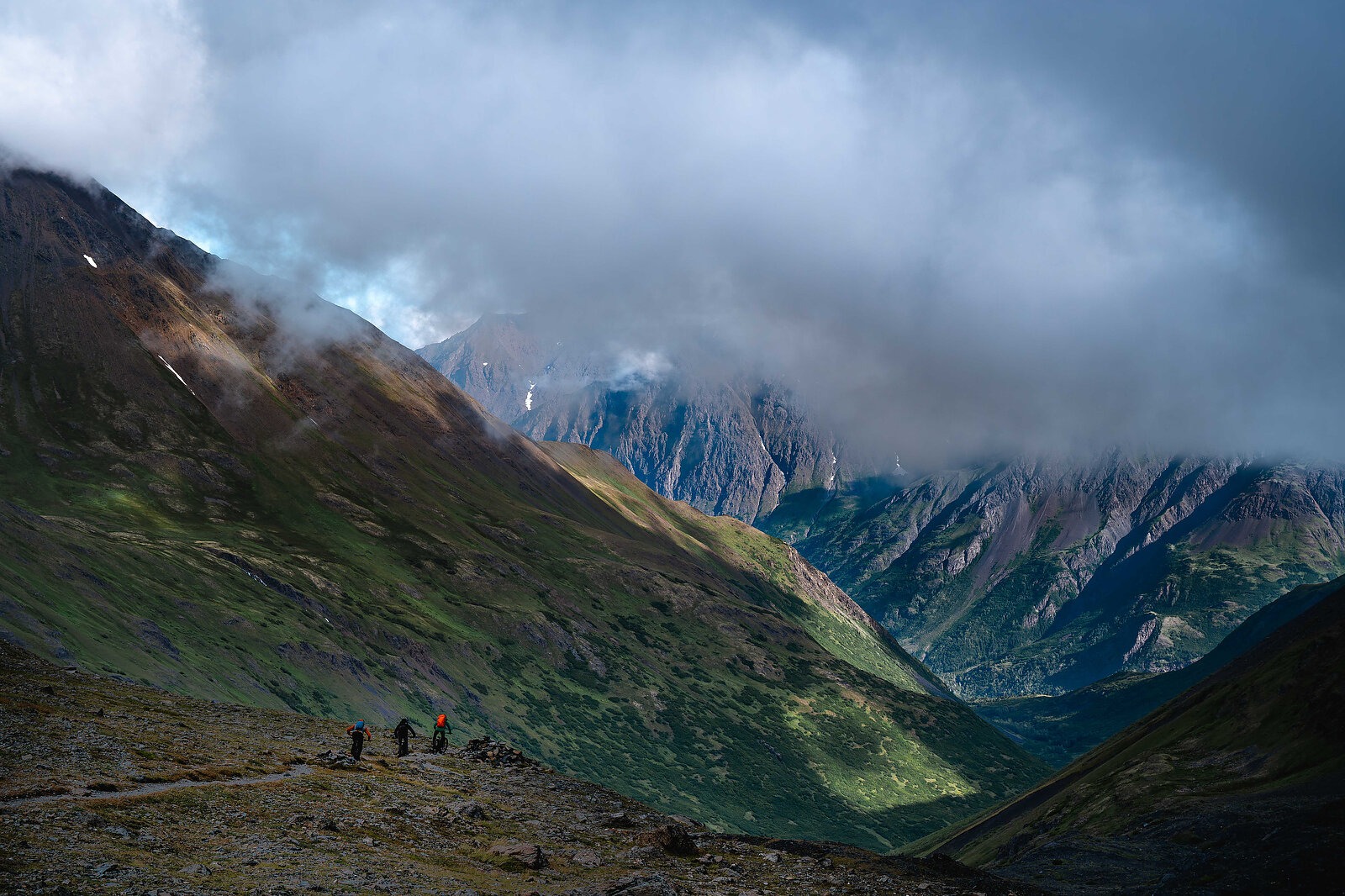
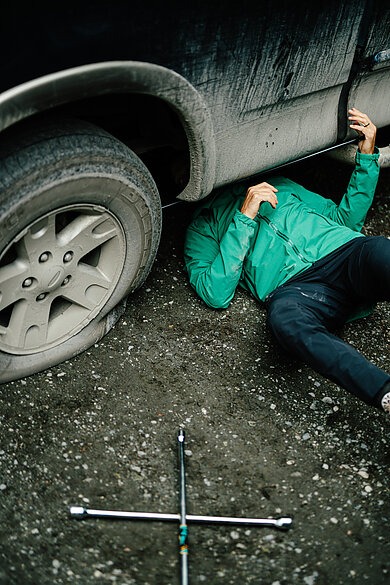
Mountain biking is still in its infancy in Alaska or, perhaps, maybe its early teenage years. The best has yet to come in the area’s development. The community is driven, the purpose-built, sanctioned trails are fantastic and accessible, while trails being constructed by local builders have their own style of hike-a-bike-only access and rake-and-ride, fall-line riding that fits Alaska’s signature “I’ll do it myself” mentality. Most amazing though is how much room there is still left to grow.
Most of what you see in Alaska as you cruise around by car isn’t accessible via the road system, which explains why Alaska has six times more pilots per capita than any other state. But even if there were roads to guide people deeper into the mountains, there aren’t any trails.
“The ability to get out there, past the RVs and rest stops, to find something that’s never been ridden before is on another level,” said Matt Monod. “It inspires the adventure part of the brain.”
It’s safe to say that Alaska is in no danger of being overcooked by outdoor recreation tourism at this moment. However, the critical importance of open space and of this feeling of “nothingness” to the overall character of Alaska is what makes it so vulnerable to the tragedy of the commons. Locals know this all too well, and it’s led many to adopt a more old-school approach to dealing with outsiders looking for the goods.
“Scrap Trailforks, scrap Strava, and go to the local bike shop,” said Matt. “That’s where you’ll get the beta. You can make some friends, and it adds to the general sense of adventure.”
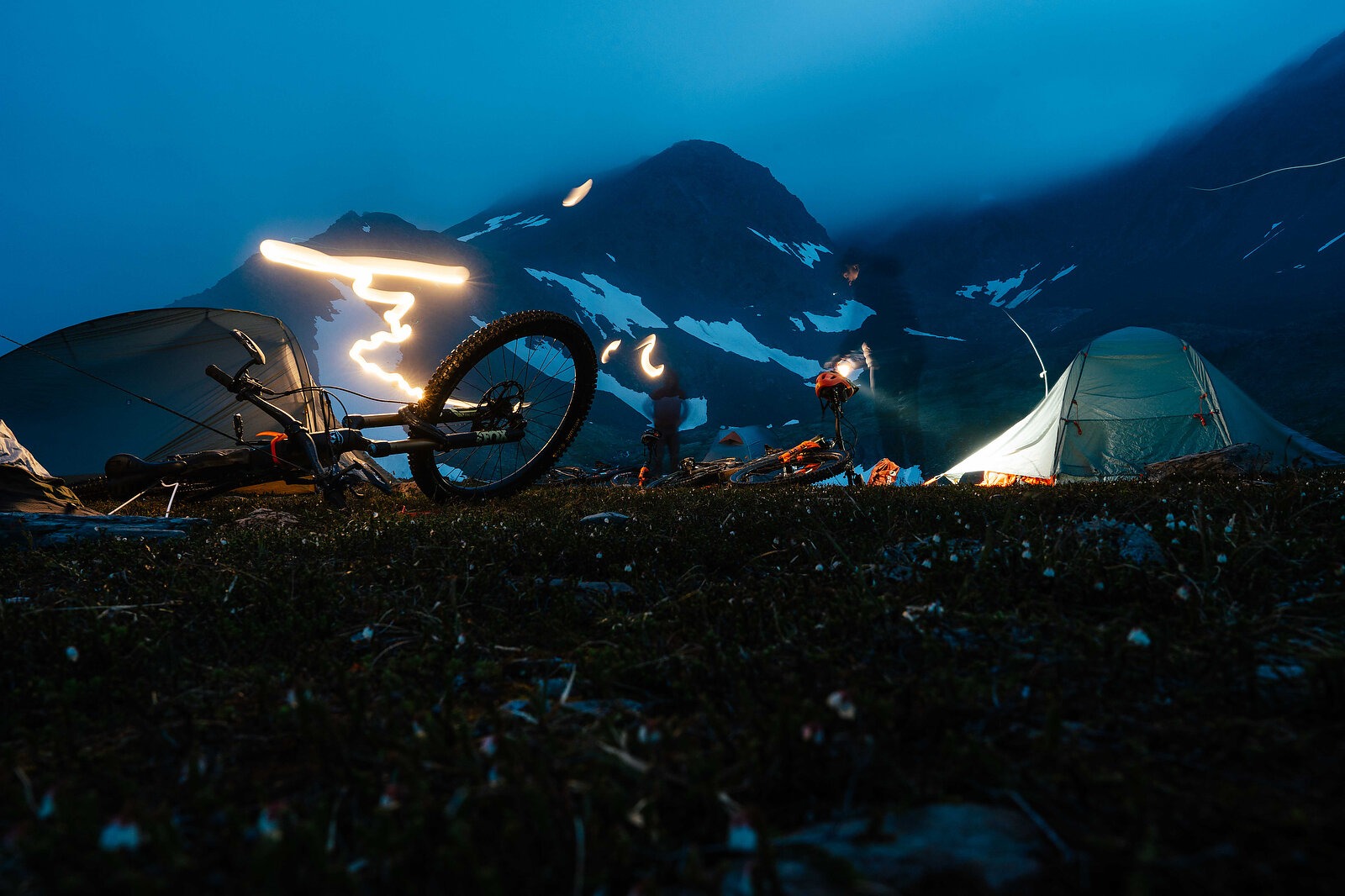
Near the end of our trip, we had our eyes set on some remote zones. It was time to chase what we had come for. With this notion of finite nothingness fresh in our minds, we prepared our camping gear and headed out of town. For the next three days our routine would involve packing and setting up camp, traveling to the next zone and riding until midnight before crashing into a deep, happy sleep.
A local tip about a zone on the eastern side of the Alaska Range led to an unforgettable final ride of the trip. With our daypacks prepped upon arrival, we started pedaling up toward a distant ridge. Sam was feeling especially excited for this one and dug up the legs that once landed him in the 2012 London Olympics, setting a pace none of could keep up with. We suffered, but we were well used to hike-a-bikes at this point, so the ensuing slog didn’t drain too much of our energy. It helped that we were hiking through a stunning setting of broad white peaks, spidering ridges extending in multiple directions, and orange hues cast on the rocks and sand that made it feel as if we headed into the epicenter of an unending sunset.
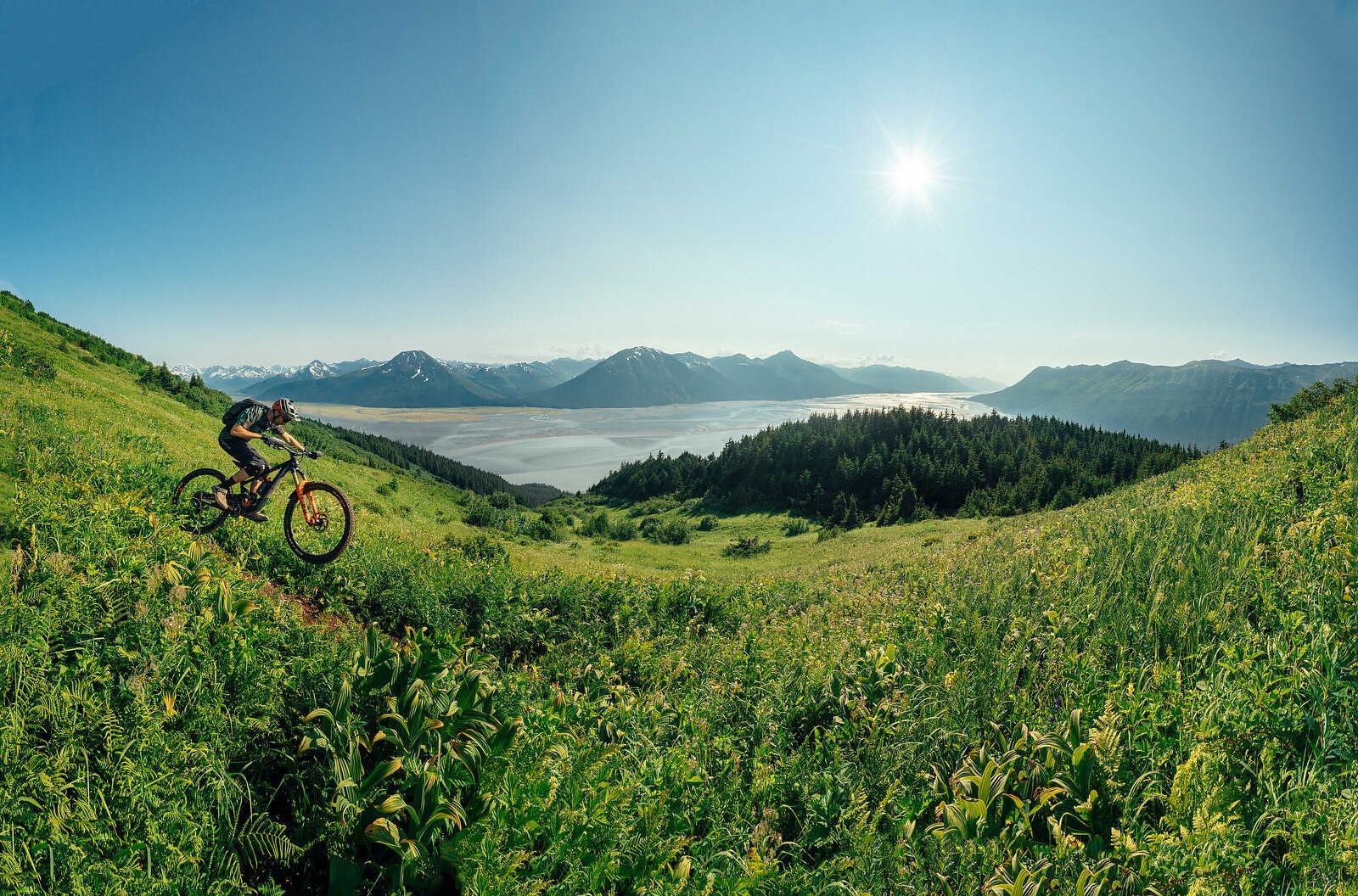
Finally, at the top, we were thankful to have prepared our bags properly as we pulled out refreshing beverages appropriate for this setting. Pete, true to form, surprised us with candied salmon, which grounded us in the moment. Good friends enjoying local delicacies on a remote peak in the middle of Alaska. We felt small, but whole.
We descended the narrow ridge for what felt like forever, seemingly not getting any closer to the valley below. Together, we turned off the ridge and traversed, each making our individual line across the sloping tundra. A creeping nostalgia set it in as I watched Pete, Matt, and Sam losing altitude and jumping and laughing their way down the mountain. This was the conclusion of an epic riding trip, but it was also the end of a glimpse into one of the world’s last untouched frontiers. During our trip, we saw what the future of mountain biking in Alaska could hold. Hopefully, it’s a vision that both locals and visitors alike can feel good about.
Back home, I conjured up a vision of that final evening descent. In it, the boys are hooting and hollering their way into the sunset—their calls a reminder that vast, pristine landscapes still exist.
